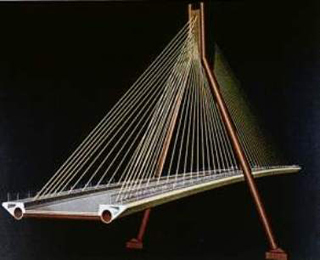
Fiber reinforced polymer (FRP) composite technology is recommended by the U.S. Federal Highway Administration for reinforcing elements, cable and tendon systems, laminates and repairs to highway bridges. (Image courtesy of U.S. FHWA.)
Instructor(s)
Prof. David Roylance
MIT Course Number
3.91
As Taught In
Spring 2007
Level
Graduate
Course Description
Course Features
Course Description
This course is aimed at presenting the concepts underlying the response of polymeric materials to applied loads. These will include both the molecular mechanisms involved and the mathematical description of the relevant continuum mechanics. It is dominantly an "engineering" subject, but with an atomistic flavor. It covers the influence of processing and structure on mechanical properties of synthetic and natural polymers: Hookean and entropic elastic deformation, linear viscoelasticity, composite materials and laminates, yield and fracture.


